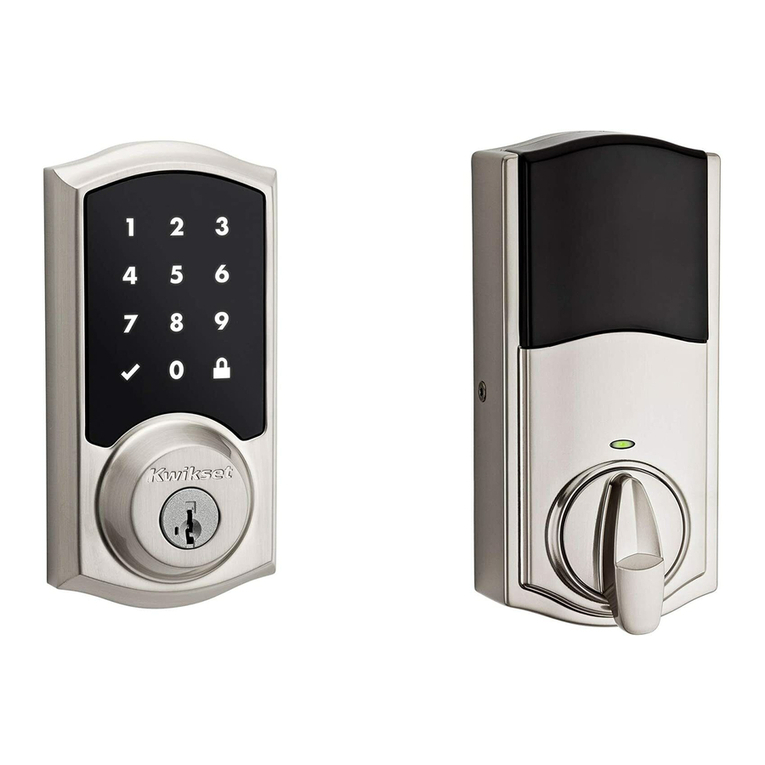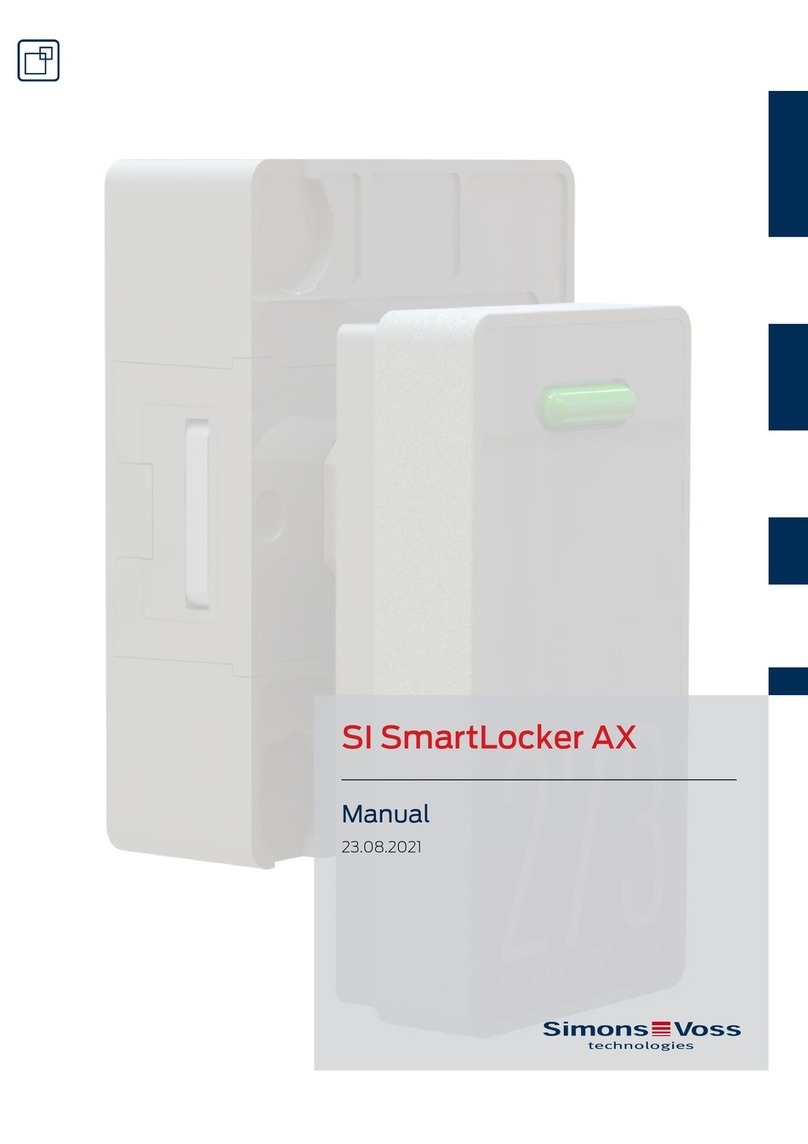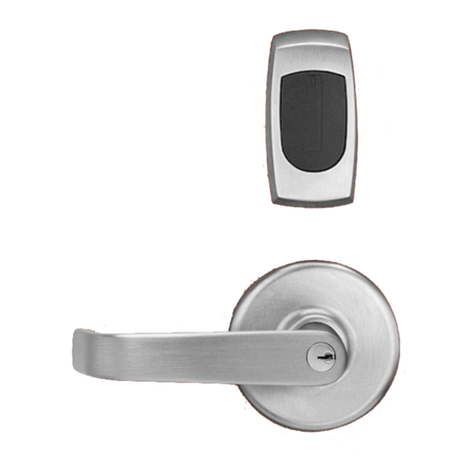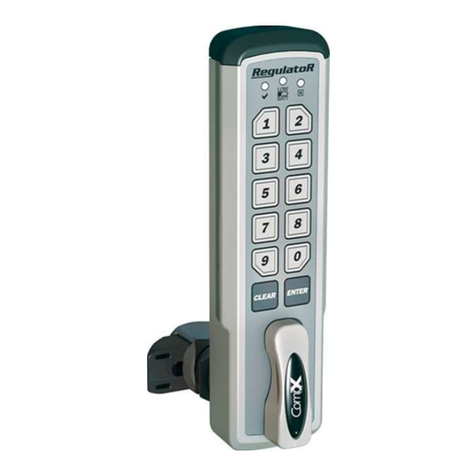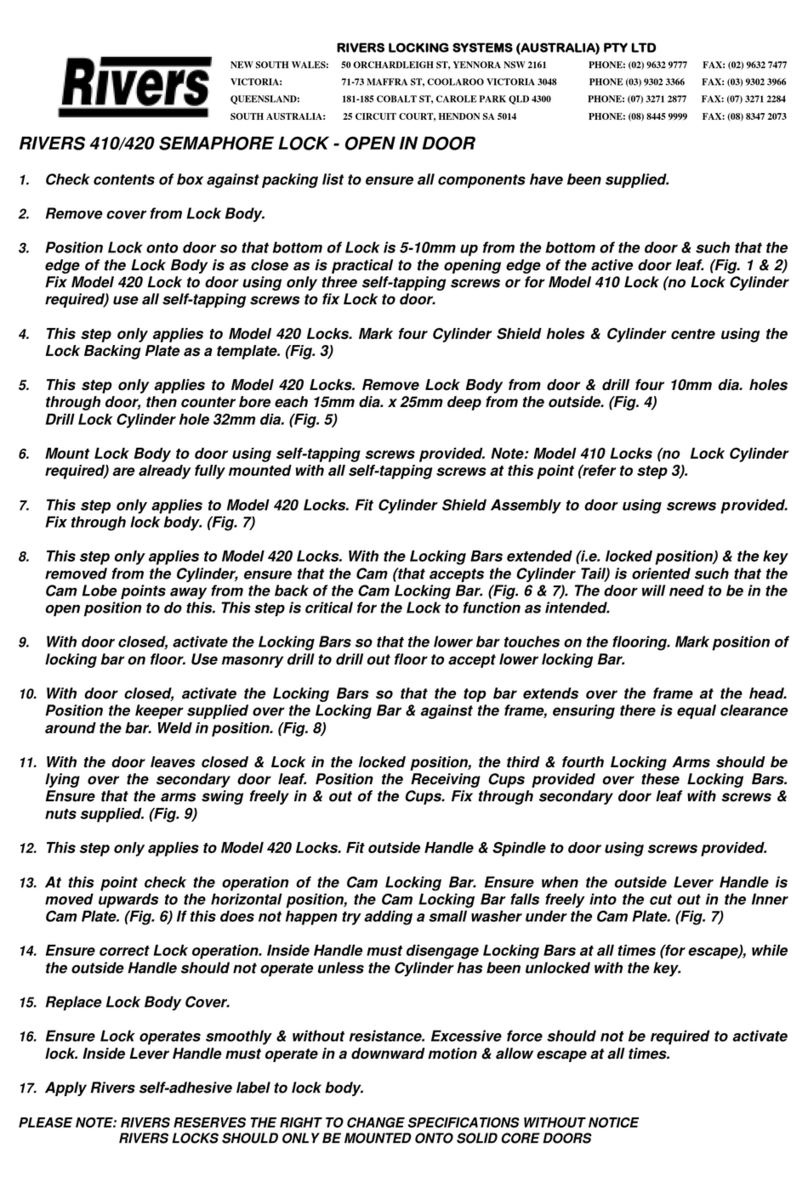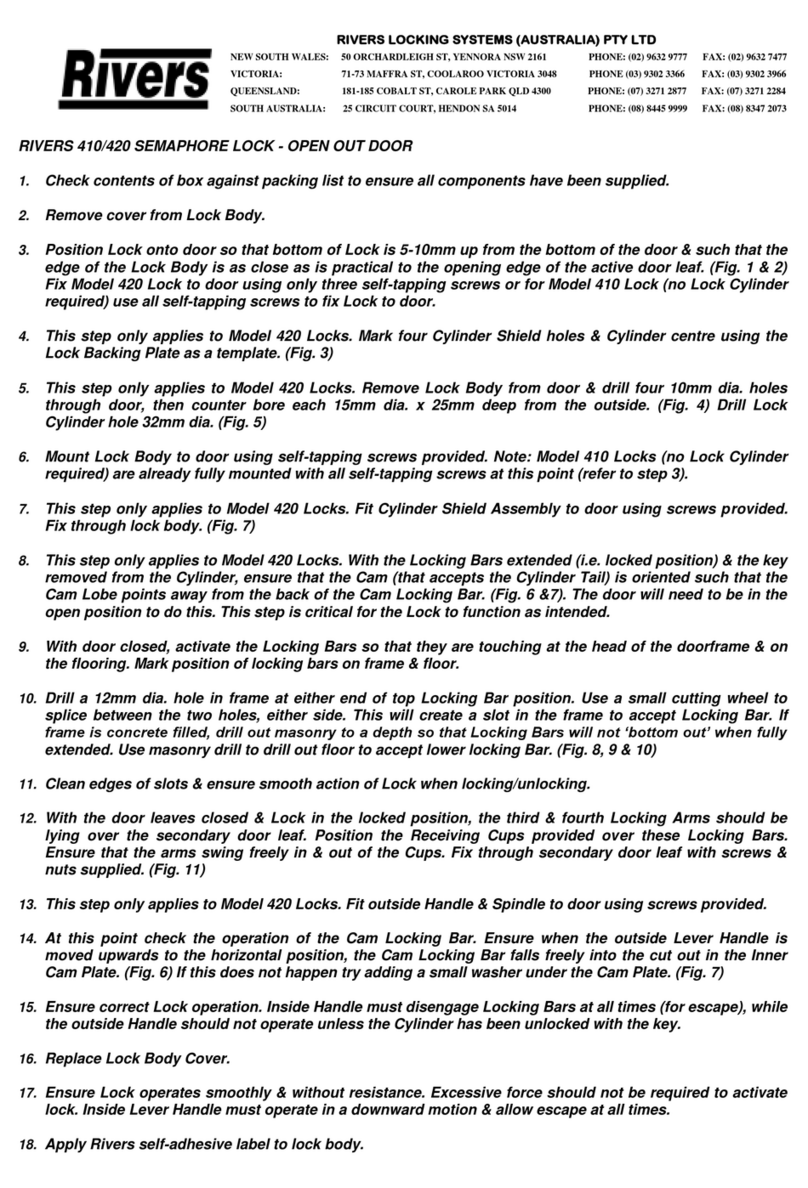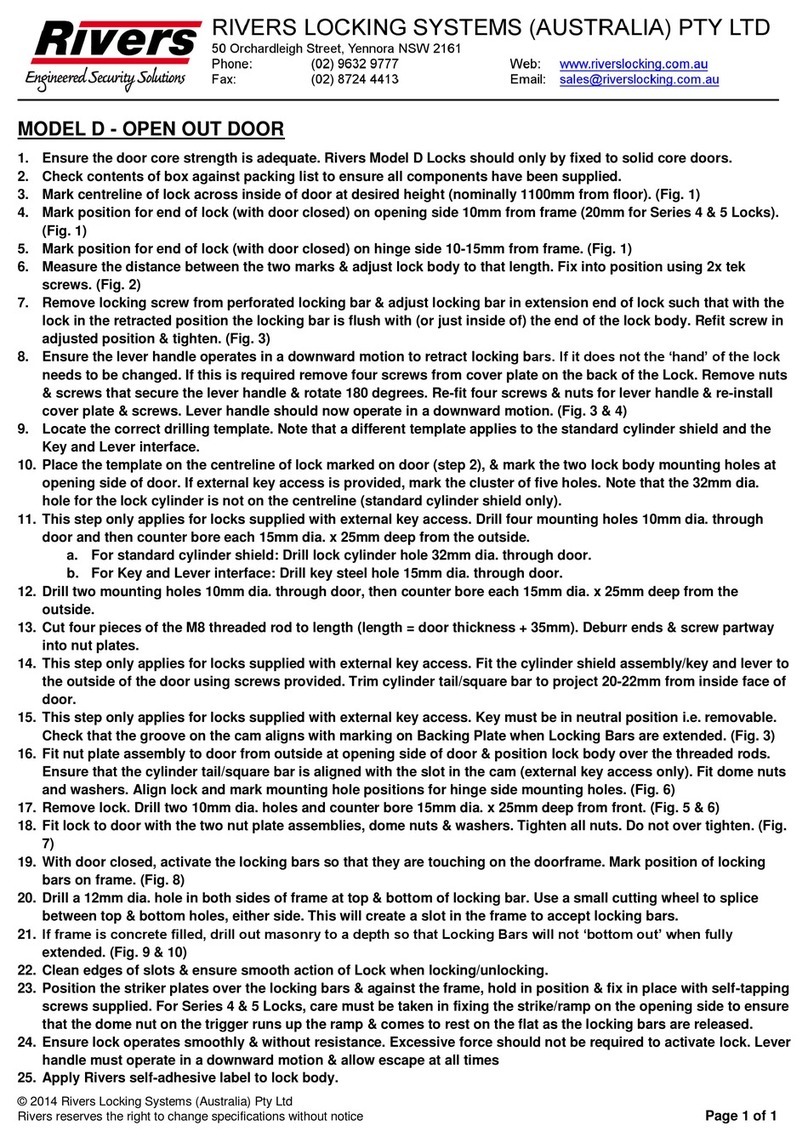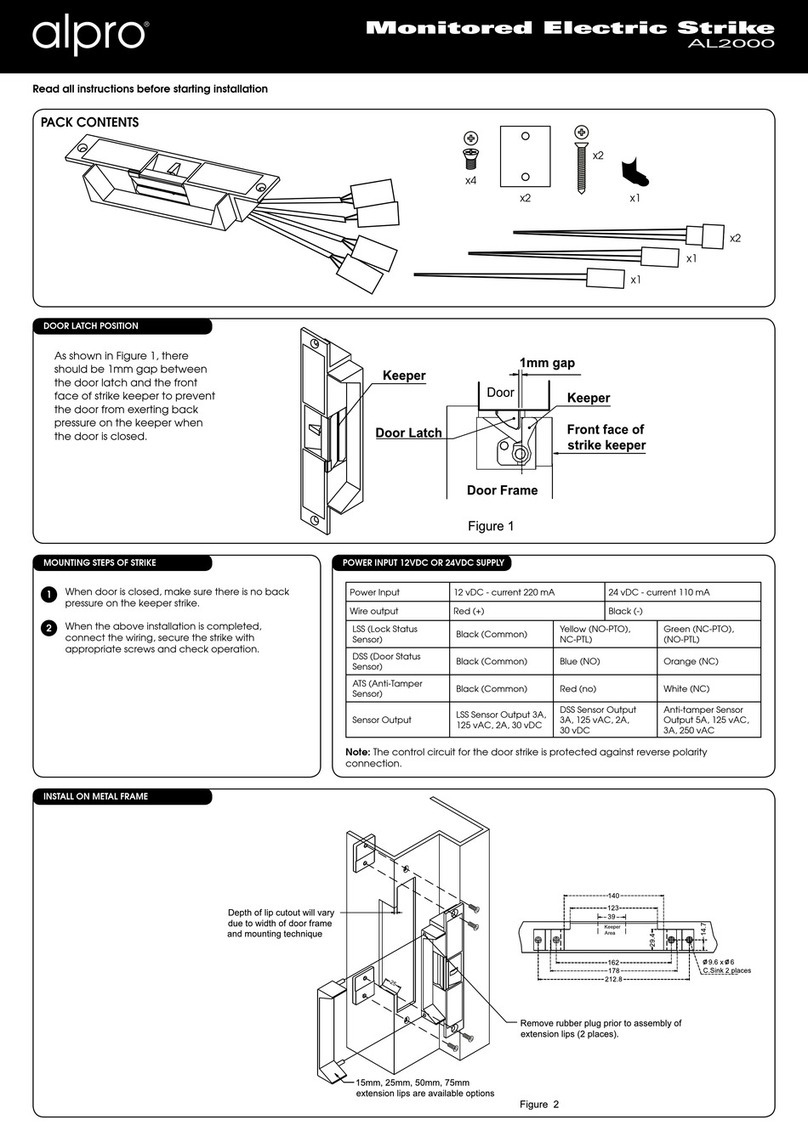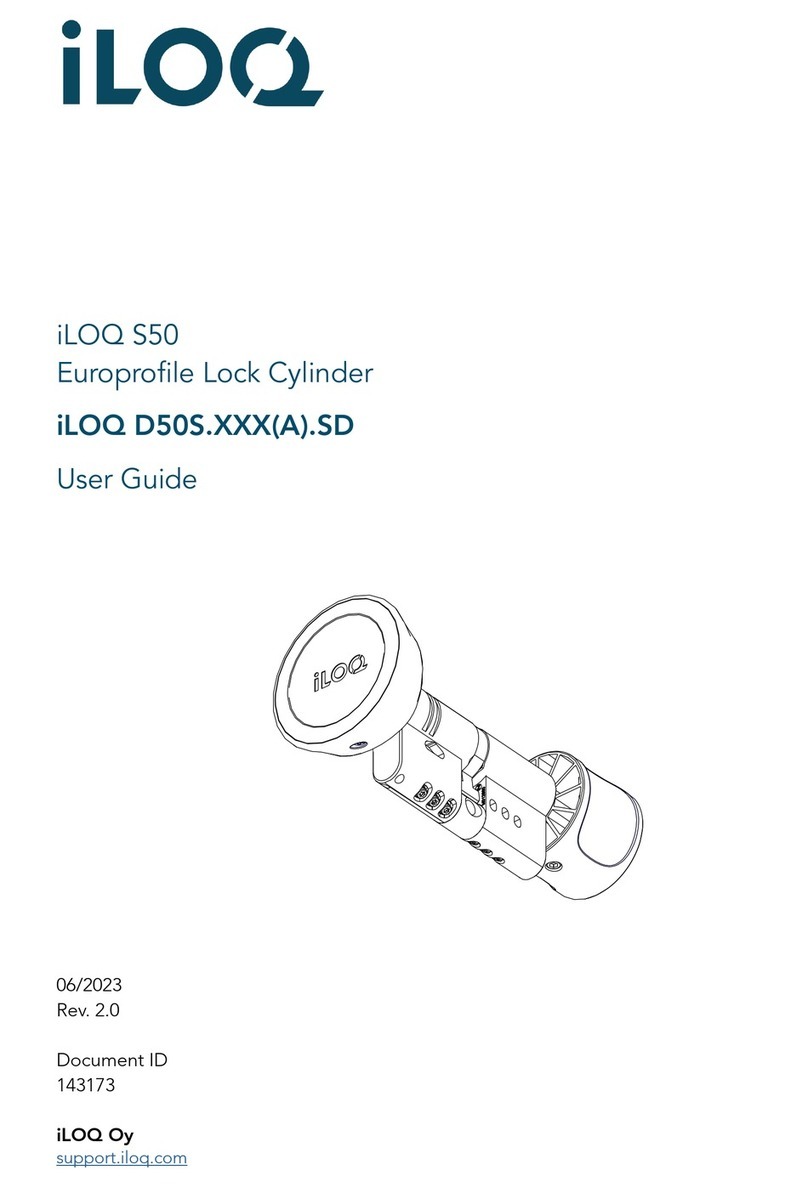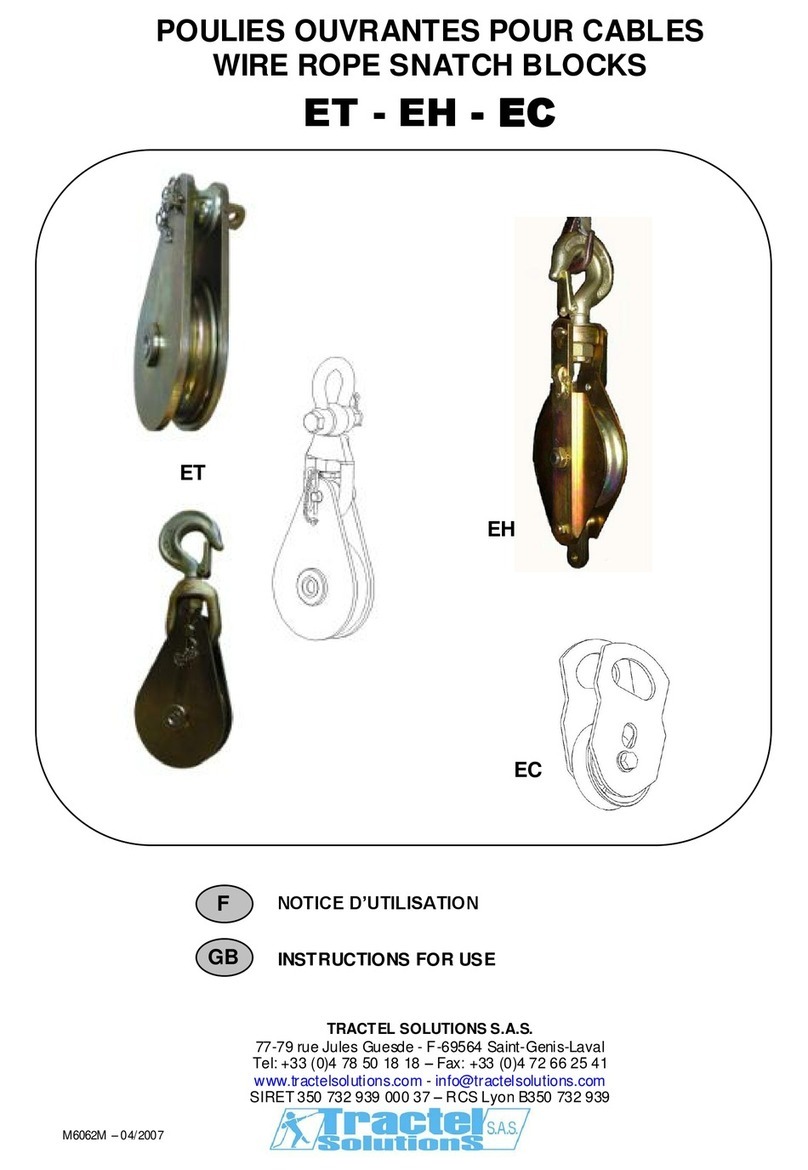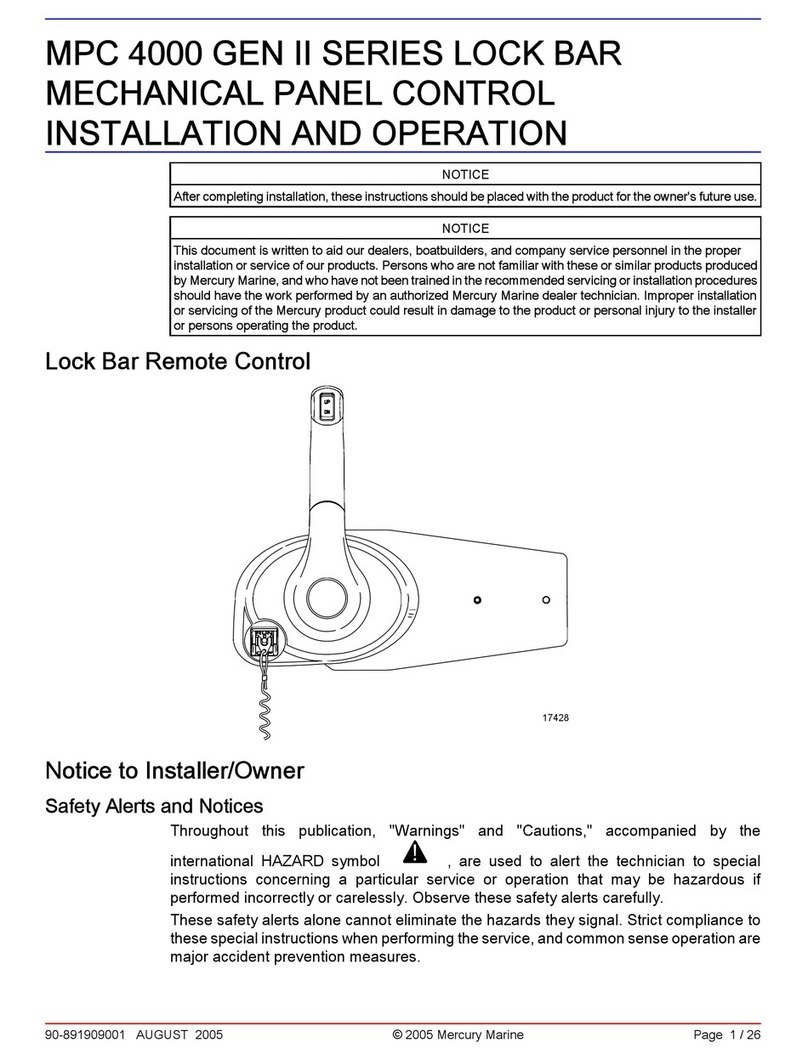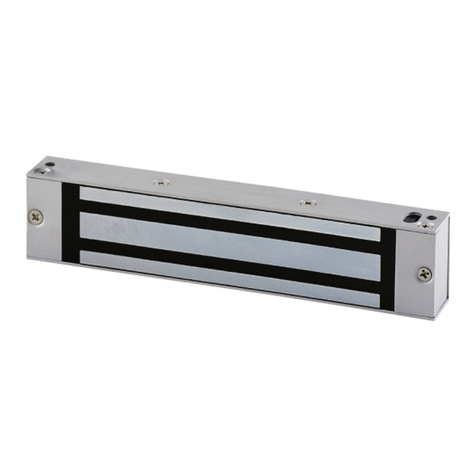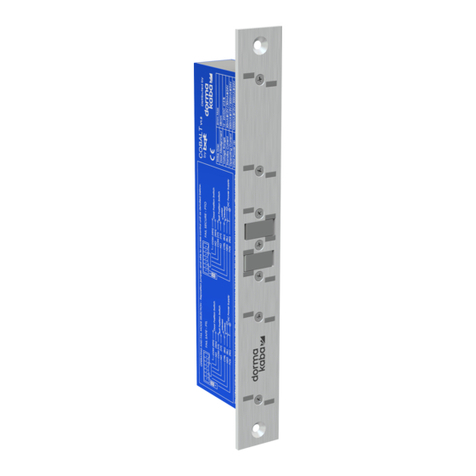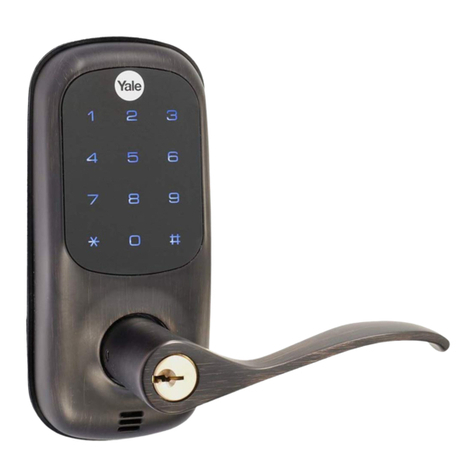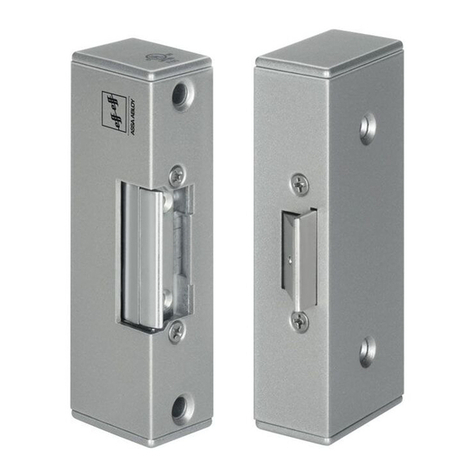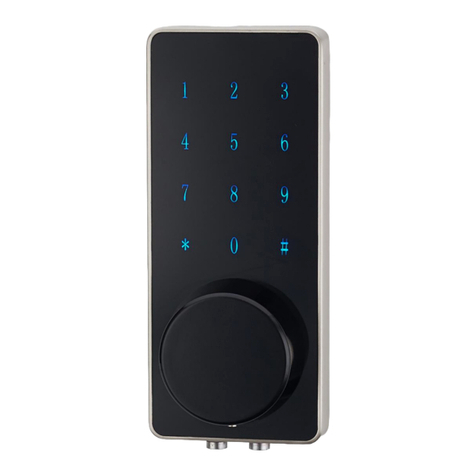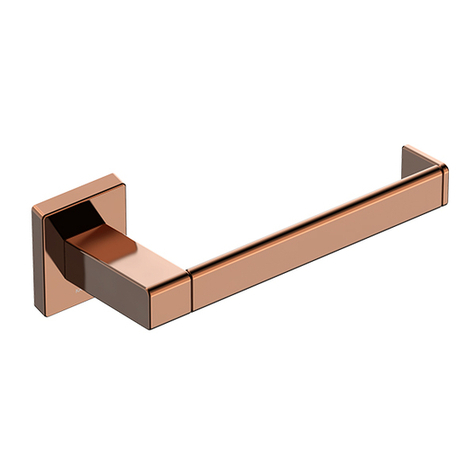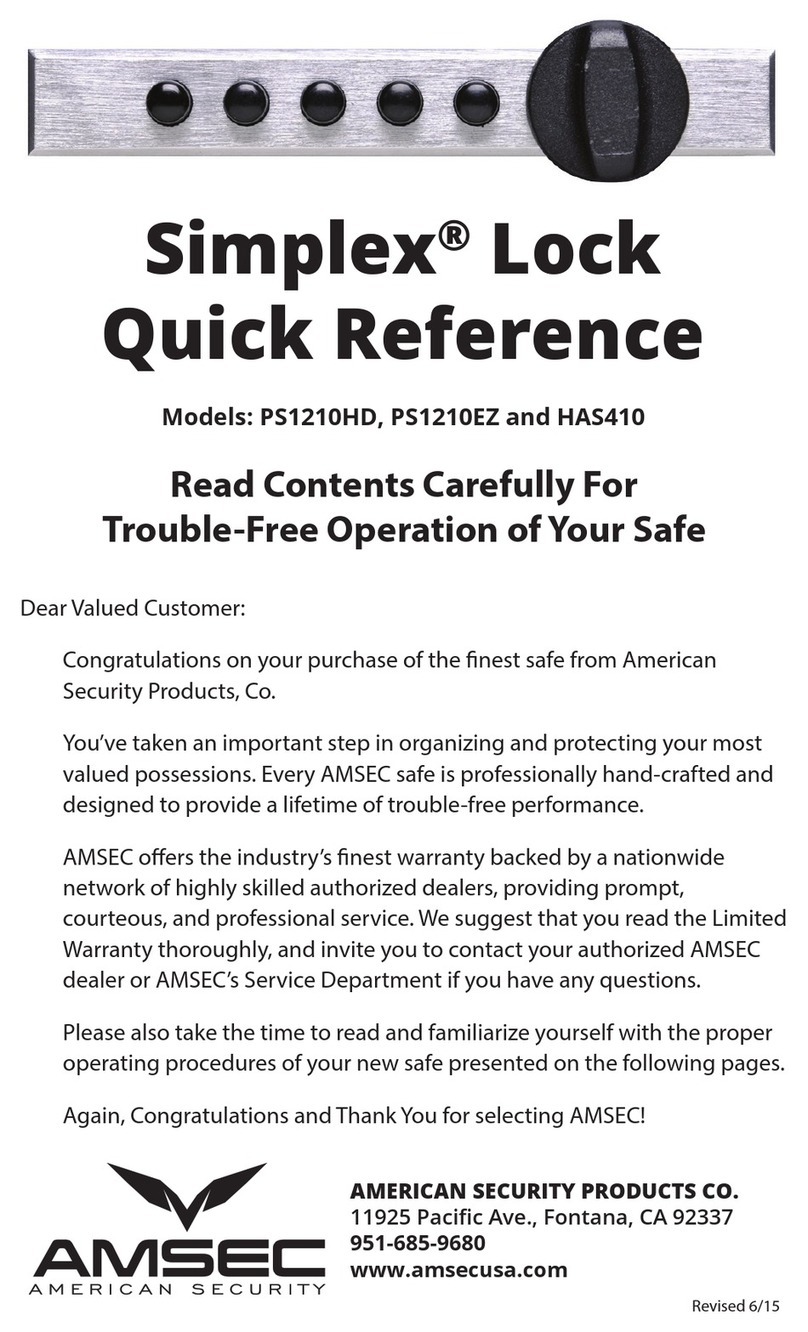
© 2014 Rivers Locking Systems (Australia) Pty Ltd
Rivers reserves the right to change specifications without notice Page 1 of 2
MODEL D - OPEN IN DOOR
1. Ensure the door core strength is adequate. Rivers Model D Locks should only by fixed to solid core doors.
2. Check contents of box against packing list to ensure all components have been supplied.
3. Mark centreline of lock across inside of door at desired height (nominally 1100mm from floor). (Fig. 1)
4. Mark position for end of lock (with door closed) on opening side 10mm from edge of door (20mm for Series 4 & 5
Locks). (Fig. 1)
5. Mark position for end of Lock (with door closed) on hinge side 20-25mm from edge of door. (Fig. 1)
6. Measure the distance between the two marks & adjust lock body to that length. Fix into position using 2x tek
screws. (Fig. 2)
7. Remove locking screw from perforated locking bar & adjust locking bar in extension end of lock such that with the
lock in the retracted position the locking bar is flush with (or just inside of) the end of the lock body. Refit screw in
adjusted position & tighten. (Fig. 3)
8. Ensure the lever handle operates in a downward motion to retract locking bars. If it does not the ‘hand’ of the lock
needs to be changed. If this is required, remove four screws from cover plate on the back of lock. Remove nuts &
screws that secure the lever handle & rotate 180 degrees. Re-fit four screws & nuts for lever handle & re-install
cover plate & screws. Lever handle should now operate in a downward motion. (Fig. 3 & 4)
9. Locate the correct drilling template. Note that a different template applies to the standard cylinder shield and the
Key and Lever interface.
10. Place the template on the centreline of the lock marked on door (step 2), & mark the two lock body mounting holes
at opening side of door. If external key access is provided, mark the cluster of five holes. Note that the 32mm dia.
hole for the lock cylinder is not on the centreline (standard cylinder shield only).
11. This step only applies for locks supplied with external key access. Drill four mounting holes 10mm dia. through
door, and then counter bore each 15mm dia. x 25mm deep from the outside.
a. For cylinder shield: Drill lock cylinder hole 32mm dia. through door.
b. For Key and Lever interface: Drill key steel hole 15mm dia. through door.
12. Drill two 3mm dia. x 15mm deep holes from the inside, for mounting lock body.
13. This step only applies for locks supplied with external key access. Fit the cylinder shield/Key and Lever assembly
to the outside of the door using screws provided. Trim cylinder tail/square bar to project 20-22mm from inside face
of door.
14. This step only applies for locks supplied with external key access. Key must be in neutral position i.e. removable.
Check that the groove on the cam aligns with marking on backing plate when locking bars are extended. (Fig. 3)
15. Position lock body on door, ensuring that the Cylinder Tail/Square bar is aligned with the slot in the cam (external
key access only). Fix lock using coach screws & washers supplied (do not over tighten) & mark position for hinge
side mounting holes.
16. Remove lock & drill two 3mm dia. x 15mm deep holes from the inside for coach screws.
17. Fit lock to door with the four coach screws & washers. Tighten all screws. Do not over tighten. (Fig. 5)
18. With door closed, activate the locking bars so that they are extended over the doorframe. Position the keepers over
the locking bars & against the frame, ensuring that there is equal clearance around the bars. Mark hole positions in
keepers onto frame. (Fig. 6)
19. Drill outer keeper holes using a 4mm dia. drill through face of frame. Drill inner keeper holes using a 10mm dia. drill
right through the width of the frame. Use a masonry drill if frame is concrete filled. Counter bore 15mm dia. x 25mm
from outside face of frame. (Fig. 7)
20. Fit the keepers to the frame using 14G self-tapping screws in outer holes. Add spacers (provided) behind keepers if
necessary to obtain freedom of movement. (Fig. 8) For Series 4 & 5 ;ocks, care must be taken in fixing the
strike/ramp on the opening side to ensure that the dome nut on the trigger runs up the ramp & comes to rest on the
flat as the locking bars are released.
21. Cut four pieces of the M8 threaded rod to length (length = frame thickness + 15mm). Deburr ends & screw partway
into nut plates.
22. Fit the nut plates with threaded rod through the frame (from the outside). Run the dome nuts & washers onto the
threaded rod & tighten. (Fig. 9)
23. Fit door stop (not supplied), if necessary, to prevent damage to the hinge side keeper.
24. Ensure lock operates smoothly & without resistance. Excessive force should not be required to activate lock. lever
handle must operate in a downward motion & allow escape at all times.
25. Apply Rivers self-adhesive label to lock body.


